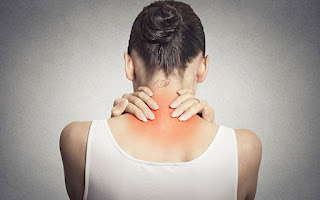What is Cervicogenic Headache?
Cervicogenic headache in simple terms means headache originating from the neck. Even though the pain you experience is in the head or part of the face, the actual problem in lies in the neck. The possible pain generators in the neck include the joints, discs, surrounding tissues such as the neck muscles, coverings of the spinal cord, and blood vessels.
Headaches afflict people of all ages. The impact is variable from mild discomfort to severe incapacitation, depending on the severity and the frequency of headaches. Often the causative factors are numerous and difficult to pinpoint. Cervicogenic headaches represent one such condition that is easily overlooked and under diagnosed, due to limited awareness about the condition. This is a treatable cause of headaches with possibility of good relief if the diagnosis is correct.
Signs & Symptoms of Cervicogenic Headache:
Some of the pointers towards cervicogenic headache include:
- Increase in headache with neck movements such as nodding or rotation of neck
- Increase pain with pressure on certain sensitive points in the neck
- Stiffness and reduced range of neck movements
- Pain is generally one sided and does not change sides. Sometimes both sides are involved
- Generally described as a pressure sensation at the back, side or front of head or in the area around the eye. It may be episodic with varying duration or present constantly. During severe episodes nausea and vomiting and other features similar to migraine can be present making the diagnosis more challenging.
The headaches often start after trauma/ injuries such as whiplash. Conditions such as occipital neuralgia (a problem associated with the nerves at the back of head) are closely linked to cervicogenic headaches.
Causes of Cervicogenic Headache:
A number of neck conditions have been attributed to cause cervicogenic headaches including:
- Degenerative changes in the joints of the cervical spine such as osteoarthritis
- Discs of the cervical spine
- Whiplash injury to the cervical spine or other sports injuries
- Spasms of the neck muscles
- Bad posture of the neck for long periods of time, such as when working or sleeping
Diagnosing Cervicogenic Headaches:
Diagnosing a cervicogenic headache can be tricky, as a number of headaches can present with similar features. Your doctor will obtain a detailed history often taking you back to when it had first started. You will be asked in detail about your pain symptoms, stress levels, work, eating and sleep habits, medication usage etc. This is usually followed up by examination. Diagnostic investigations such as X-ray, MRI, CT scans cannot conform the diagnosis but do provide support to the diagnosis. An injection is often used for confirmation of the diagnosis.
Cervicogenic Headache Management Options:
There are a variety of treatment methods for helping with cervicogenic headaches. These include:
- Lifestyle changes such as regulation of sleep cycle, workplace ergonomics
- Medication may include mild or potent pain killers
- Interventions such as joint, nerve or muscle injections. These generally involve injection of local anaesthetics with or without steroids. Sometimes Botulinum toxin injections are used for muscles
- Radiofrequency treatment can help relieve/ reduce these headaches for a prolonged duration
Management Options continued:
- Physical therapy can help to stretch and relax the muscles in and around your neck. They can help deal with the muscular trigger points
- Psychology input may involve biofeedback, relaxation therapy and cognitive behavioural therapy
- Complimentary and alternative medicine including meditation, yoga, TENS, acupressure and acupuncture
- Surgery – this may be used in cases with severe joint changes or nerve compression causing severe headache remains unrelieved by other modalities, but this is rare








